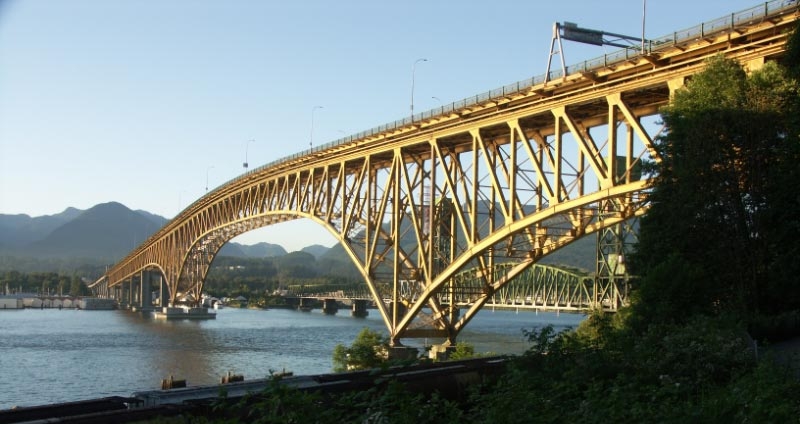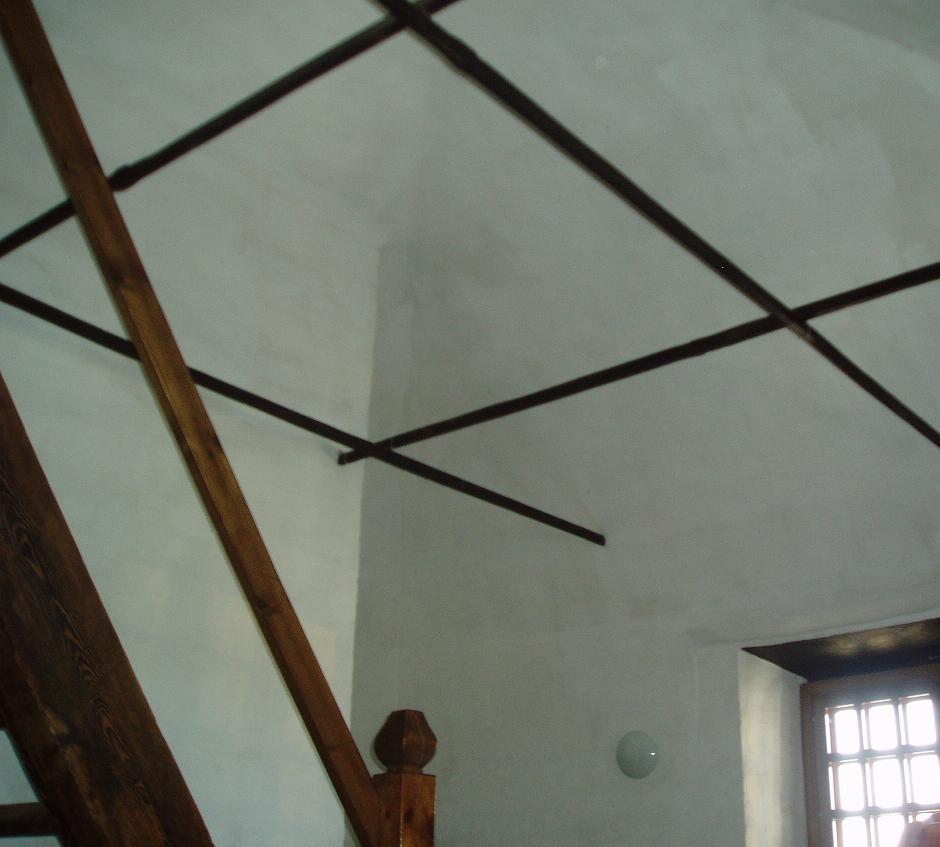|
Steel Fixer
A steel fixer (UK, ironworkers or "rod busters" in the United States) is a tradesman who positions and secures steel reinforcing bars, also known as rebar, and steel mesh used in reinforced concrete on construction projects. The work involves following engineering drawings that detail the type of bar and the spacing used and setting out the work. The reinforcing bars are tied together with wire, which is cut using nips, or electric rebar tiers. Steel fixers are also responsible for attaching 'spacers' and 'chairs' that determine the amount of concrete cover. See also * Apprenticeship * Construction worker A construction worker is a worker employed in the physical construction of the built environment and its infrastructure. Definition By some definitions, workers may be engaged in manual labour as unskilled or semi-skilled workers; they may be s ... * Vocational training References External linksSteel fixer job guide [...More Info...] [...Related Items...] OR: [Wikipedia] [Google] [Baidu] |
Ironworker
An ironworker is a tradesman who works in the iron-working industry. Ironworkers assemble the structural framework in accordance with engineered drawings and install the metal support pieces for new buildings. They also repair and renovate old structures using reinforced concrete and steel. Ironworkers may work on factories, steel mills, and utility plants. [Baidu] |
Tradesman
A tradesman, tradeswoman, or tradesperson is a skilled worker that specializes in a particular trade (occupation or field of work). Tradesmen usually have work experience, on-the-job training, and often formal vocational education in contrast to an apprentice, who is learning the trade. As opposed to a craftsman or an artisan, the occupation of a tradesman is not necessarily restricted to manual work. History In Victorian England: :The terms "skilled worker," "craftsman," "artisan," and "tradesman" were used in senses that overlap. All describe people with specialized training in the skills needed for a particular kind of work. Some of them produced goods that they sold from their own premises (e.g. bootmakers, saddlers, hatmakers, jewelers, glassblowers); others (e.g. typesetters, bookbinders, wheelwrights) were employed to do one part of the production in a business that required a variety of skilled workers. Still others were factory hands who had become experts ... [...More Info...] [...Related Items...] OR: [Wikipedia] [Google] [Baidu] |
Rebar
Rebar (short for reinforcing bar), known when massed as reinforcing steel or reinforcement steel, is a steel bar used as a tension device in reinforced concrete and reinforced masonry structures to strengthen and aid the concrete under tension. Concrete is strong under compression, but has weak tensile strength. Rebar significantly increases the tensile strength of the structure. Rebar's surface features a continuous series of ribs, lugs or indentations to promote a better bond with the concrete and reduce the risk of slippage. The most common type of rebar is carbon steel, typically consisting of hot-rolled round bars with deformation patterns embossed into its surface. Steel and concrete have similar coefficients of thermal expansion, so a concrete structural member reinforced with steel will experience minimal differential stress as the temperature changes. Other readily available types of rebar are manufactured of stainless steel, and composite bars made of glass fiber, ... [...More Info...] [...Related Items...] OR: [Wikipedia] [Google] [Baidu] |
Reinforced Concrete
Reinforced concrete (RC), also called reinforced cement concrete (RCC) and ferroconcrete, is a composite material in which concrete's relatively low ultimate tensile strength, tensile strength and ductility are compensated for by the inclusion of reinforcement having higher tensile strength or ductility. The reinforcement is usually, though not necessarily, steel bars (rebar) and is usually embedded passively in the concrete before the concrete sets. However, Prestressed_concrete#Post-tensioned_concrete, post-tensioning is also employed as a technique to reinforce the concrete. In terms of volume used annually, it is one of the most common engineering materials. In corrosion engineering terms, when designed correctly, the alkalinity of the concrete protects the steel rebar from corrosion. Description Reinforcing schemes are generally designed to resist Tension (physics), tensile Stress (mechanics), stresses in particular regions of the concrete that might cause unacceptable frac ... [...More Info...] [...Related Items...] OR: [Wikipedia] [Google] [Baidu] |
Construction
Construction is a general term meaning the art and science to form Physical object, objects, systems, or organizations,"Construction" def. 1.a. 1.b. and 1.c. ''Oxford English Dictionary'' Second Edition on CD-ROM (v. 4.0) Oxford University Press 2009 and comes from Latin ''constructio'' (from ''com-'' "together" and ''struere'' "to pile up") and Old French ''construction''. To construct is the verb: the act of building, and the noun is construction: how something is built, the nature of its structure. In its most widely used context, construction covers the processes involved in delivering buildings, infrastructure, industrial facilities and associated activities through to the end of their life. It typically starts with planning, financing, and design, and continues until the asset is built and ready for use; construction also covers repairs and maintenance work, any works to expand, extend and improve the asset, and its eventual demolition, dismantling or wikt:decommission, ... [...More Info...] [...Related Items...] OR: [Wikipedia] [Google] [Baidu] |
Engineering Drawing
An engineering drawing is a type of technical drawing that is used to convey information about an object. A common use is to specify the geometry necessary for the construction of a component and is called a detail drawing. Usually, a number of drawings are necessary to completely specify even a simple component. The drawings are linked together by a master drawing or assembly drawing which gives the ''drawing numbers'' of the subsequent detailed components, quantities required, construction materials and possibly 3D images that can be used to locate individual items. Although mostly consisting of pictographic representations, abbreviations and symbols are used for brevity and additional textual explanations may also be provided to convey the necessary information. The process of producing engineering drawings is often referred to as technical drawing or drafting (draughting). Drawings typically contain multiple views of a component, although additional ''scratch views'' ma ... [...More Info...] [...Related Items...] OR: [Wikipedia] [Google] [Baidu] |
Pincers (tool)
Pincers are a hand tool used in many situations where a mechanical advantage is required to pinch, cut or pull an object. Pincers are first-class levers, but differ from pliers in that the concentration of force is either to a point, or to an edge perpendicular to the length of the tool. This allows pincers to be brought close to a surface, which is often required when working with nails. Pincers are primarily used for removing objects (typically nails) out of a material that they have been previously applied to. Carpenter's pincers are particularly suited to these tasks. If the pincers have perpendicular cutting edges, the pincers are often called end-nippers or end-cutters. Pincers, often red-hot, have also been used as an instrument of torture since ancient Roman times or earlier. Pliers are a similar tool with a different type of head used for squeezing, rather than cutting and pulling. See also * Chela (organ) * Pincer (biology) A pincer is the part of an arthro ... [...More Info...] [...Related Items...] OR: [Wikipedia] [Google] [Baidu] |
Rebar Tier
Rebar (short for reinforcing bar), known when massed as reinforcing steel or reinforcement steel, is a steel bar used as a tension device in reinforced concrete and reinforced masonry structures to strengthen and aid the concrete under tension. Concrete is strong under compression, but has weak tensile strength. Rebar significantly increases the tensile strength of the structure. Rebar's surface features a continuous series of ribs, lugs or indentations to promote a better bond with the concrete and reduce the risk of slippage. The most common type of rebar is carbon steel, typically consisting of hot-rolled round bars with deformation patterns embossed into its surface. Steel and concrete have similar coefficients of thermal expansion, so a concrete structural member reinforced with steel will experience minimal differential stress as the temperature changes. Other readily available types of rebar are manufactured of stainless steel, and composite bars made of glass fiber, ... [...More Info...] [...Related Items...] OR: [Wikipedia] [Google] [Baidu] |
Concrete Cover
Concrete cover, in reinforced concrete, is the least distance between the surface of embedded reinforcement and the outer surface of the concrete ( ACI 130). The concrete cover depth can be measured with a cover meter. Purpose of provision of concrete cover The concrete cover must have a minimum thickness for three main reasons: * to protect the steel reinforcement bars (rebars) from environmental effects to prevent their corrosion; * to provide thermal insulation, which protects the reinforcement bars from fire, and; * to give reinforcing bars sufficient embedding to enable them to be stressed without slipping. The premature failure of corroded steel reinforcements and the expansion of the iron corrosion products around the rebars are amongst the main causes of the concrete degradation. The carbon steel of rebars is protected from oxidation by atmospheric oxygen by the high pH of concrete interstitial water. Iron bar surface is passivated as long as the pH value is higher than ... [...More Info...] [...Related Items...] OR: [Wikipedia] [Google] [Baidu] |
Construction Worker
A construction worker is a worker employed in the physical construction of the built environment and its infrastructure. Definition By some definitions, workers may be engaged in manual labour as unskilled or semi-skilled workers; they may be skilled tradespeople; or they may be supervisory or managerial personnel. Under safety legislation in the United Kingdom, for example, construction workers are defined as people "who work for or under the control of a contractor on a construction site"; in Canada, this can include people whose work includes ensuring conformance with building codes and regulations, and those who supervise other workers. The term is a broad and generic one and most construction workers are primarily described by the specific level and type of work they perform. Laborers comprise a large grouping in most national construction industries. In the United States, for example, in May 2021 the construction sector employed just over 7.5 million people, of whom just ov ... [...More Info...] [...Related Items...] OR: [Wikipedia] [Google] [Baidu] |
Apprenticeship
Apprenticeship is a system for training a new generation of practitioners of a trade or profession with on-the-job training and often some accompanying study (classroom work and reading). Apprenticeships can also enable practitioners to gain a license to practice in a regulated occupation. Most of their training is done while working for an employer who helps the apprentices learn their trade or profession, in exchange for their continued labor for an agreed period after they have achieved measurable competencies. Apprenticeship lengths vary significantly across sectors, professions, roles and cultures. In some cases, people who successfully complete an apprenticeship can reach the "journeyman" or professional certification level of competence. In other cases, they can be offered a permanent job at the company that provided the placement. Although the formal boundaries and terminology of the apprentice/journeyman/master system often do not extend outside guilds and trade unions, ... [...More Info...] [...Related Items...] OR: [Wikipedia] [Google] [Baidu] |









